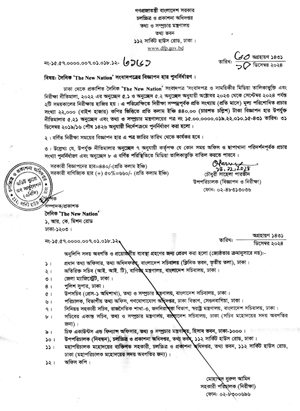Qeekend Plus Desk :
Coronavirus outbreak has spread too many countries across the globe. Bangladesh with over 3 confirmed cases of Coronavirus so far. There’s also a lot of panic across, more so because the disease exhibits symptoms similar to that of a cold or flu. The number of people who have died of the disease globally stands more than 4,000 till March 10.
While the cases continue to rise, the biggest focus right now is to diagnose and quarantine people as soon as possible to stop the spread of infection. Even though the symptoms are similar to that of a cold or the flu, coronavirus is a ‘novel’ strain, and hence, the testing is also different.
What is the procedure?
Quarantine and isolation is the first line of defence to protect against Coronavirus risk.
Since coronavirus is a high-risk infection, Indian Council of Medical Research (ICMR) suggests that anyone with a recent travel history to COVID-19 affected countries or someone who has been in close contact with infected patients is also advised screening. A statement reads: Following people should be considered for COVID-19 testing.
1) Symptomatic (fever, sore throat, running nose, dyspnea, etc) individuals who have traveled to affected countries (China, Hong Kong, Japan, South Korea, Singapore, Iran, Italy etc.)
2) Close contacts of confirmed positive cases of COVID-19 infection.
3) All individuals evacuated and quarantined from Wuhan, China and Diamond Princess ship, Japan.
While there is no readily available test kit to detect coronavirus infection, doctors and researchers go by a series of tests to confirm the infection. Sometimes, testing can also be done at home or at the lab. The testing usually involves drawing blood and mucus samples.
To see if a person is actually infected by the ‘novel’ coronavirus strain, technicians conduct analysis which involves three specific tests:
-Swab test: A cotton swab is inserted inside the throat or the nose.
-Nasal aspirate: A saline solution is injected inside the nose and once done, the test sample is removed.
-A tracheal aspirate: Testers also insert a bronchoscope which collects swabs from inside the lungs. Sometimes, a sputum test is also ordered to analyse infection pattern.
Doctors also recommend carrying out antibodies test to detect possible side effects which can develop alongside the viral infection.
The collected samples are then studied to detect virus risk. Specific gene sequences which can detect for the novel coronavirus are conducted in virology labs. One such lab is National Institue of Virology (NIV), located in Pune. With rising cases, the government of Bangladesh has accredited more labs across the country to help fasten the testing procedures at the preliminary level. World Health Organisation (WHO) suggests that the diagnosis of COVID-19 must be done by RT-PCR (polymerase chain reaction) or gene sequencing for respiratory or blood specimens.
How long does it take for results to come back?
Since the tests are done to detect virus incubation and its gene sequence, the testing procedure takes a little longer. While some labs can send reports in less than 10 hours, otherwise, it usually takes longer to see results.
Is it reliable?
Even though the testing kit is currently set in place, it isn’t entirely ‘reliable.’ There are chances of false positives and negatives to come back. n
Coronavirus: What tests should you get done




